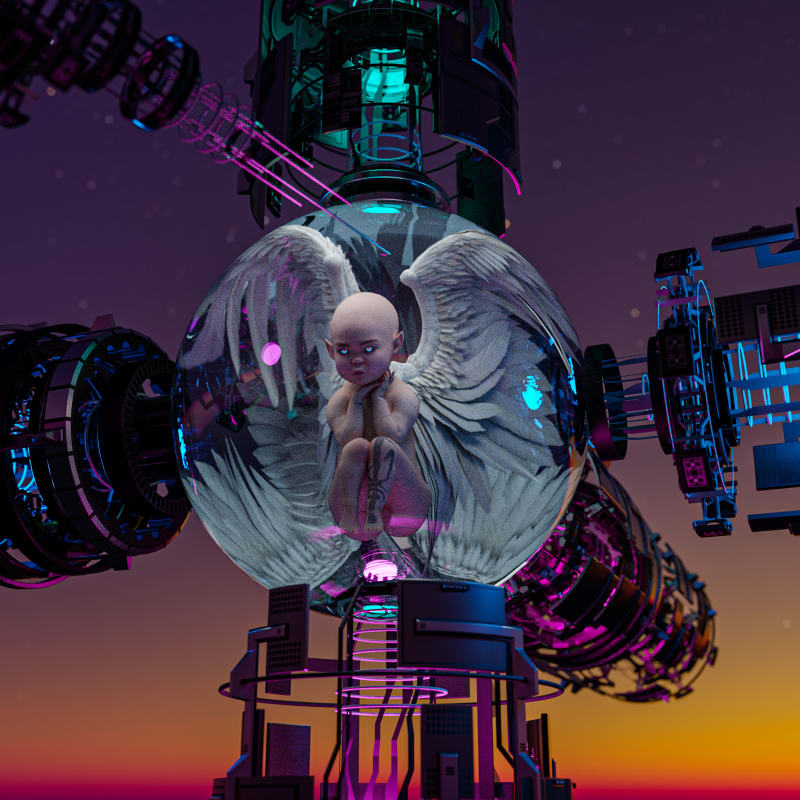Contextual Study 1: 2 Lives
Jersey’s first art exhibition that connects Art and Finance, through the inclusion of NFTs. This exhibition – 2 Lives – will be a hybrid of physical artworks in the gallery, NFTs existing in the metaverse with a mixture of a live performance. This will consist a selection of Jersey artists who will showcase, sell their work and tell their stories. This project aims to educate and inform artists, curators, collectors, business professionals, students and creators about NFTs as well as selling the artwork. The creators of 2 Lives (Francesco Vincenti & Claudia Runcio) want to leave Jersey with a knowledge of NFTs gained through an exhibition. Showing students jobs of the future, opportunities NFTs present to connect art, finance and tech.
Artists References

Grimes is Claire Elise Boucher, a Canadian musician, singer, songwriter, and record producer. In her NFTs she has the themes of futuristic atmosphere with a space theme; including “Mars,” and “Death of the Old”.
Beeple is Mike Winkelmann, a graphic designer from Charleston, SC, USA who does a variety of digital artwork. In his NFTs he has the themes of making predictions of tomorrow, based on today’s truths.
Mad Dog Jones is Michah Dowbak, a multidisciplinary artist from Thunder Bay, Ontario. As a lover of the wilderness, Mad Dog Jones’ NFTs has the themes of of beauty, nature and technology.
Beeple

“THE FIRST EMOJI” reflects the new and old together with the emoji representing the new and the workers using past technology and clothing. This image could represent how we’re a slave to the internet forced to do what they want. The contrasting colours of pink and yellow against the brown clothing, dull background and foreground, makes the yellow and pink stand out better even though they appear to be softened with a brown undertone. The use of shading on the emoji gives it a 3D look to it to make it look like a sphere in the centre of the plain area of dirt. The texture of the ground is another contrast towards the emoji as the ground is rough whereas the emoji uses wood which is smooth showing how they put more care into the emoji than the ground they walk upon. The view point of the NFT is straight ahead with the main focus of the image in the centre drawing the eyeline to the emoji then down to the people standing in the foreground.
Planning And Recording
| What | A projection of the past street wearing the clothes of that time walking in front. Also having a white background to clearly outline the past fashion. |
| Where | TV studio room. |
| Who | Our project group using own clothes which would match with the decade. |
| Why | We want to show the generation of past fashion from the 60s going to today then a prediction of what future fashion will be. |
| When | Our first shoot will be done on the 14th October and use any extra time if needed to complete this project. |
| How | A single light with barn doors and a white background to project the street of Jersey in the past years to walk in front of wearing the clothes of that time. |
































